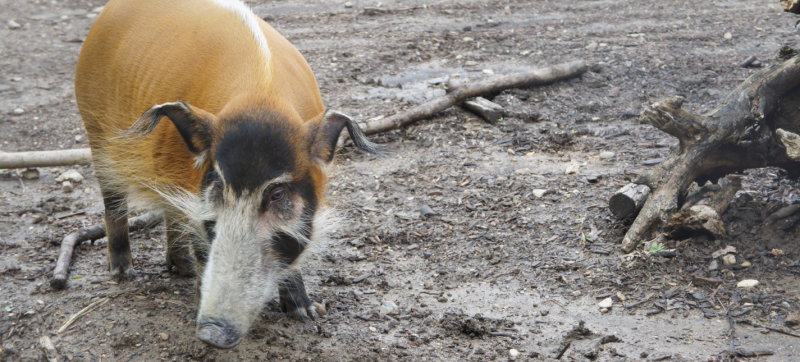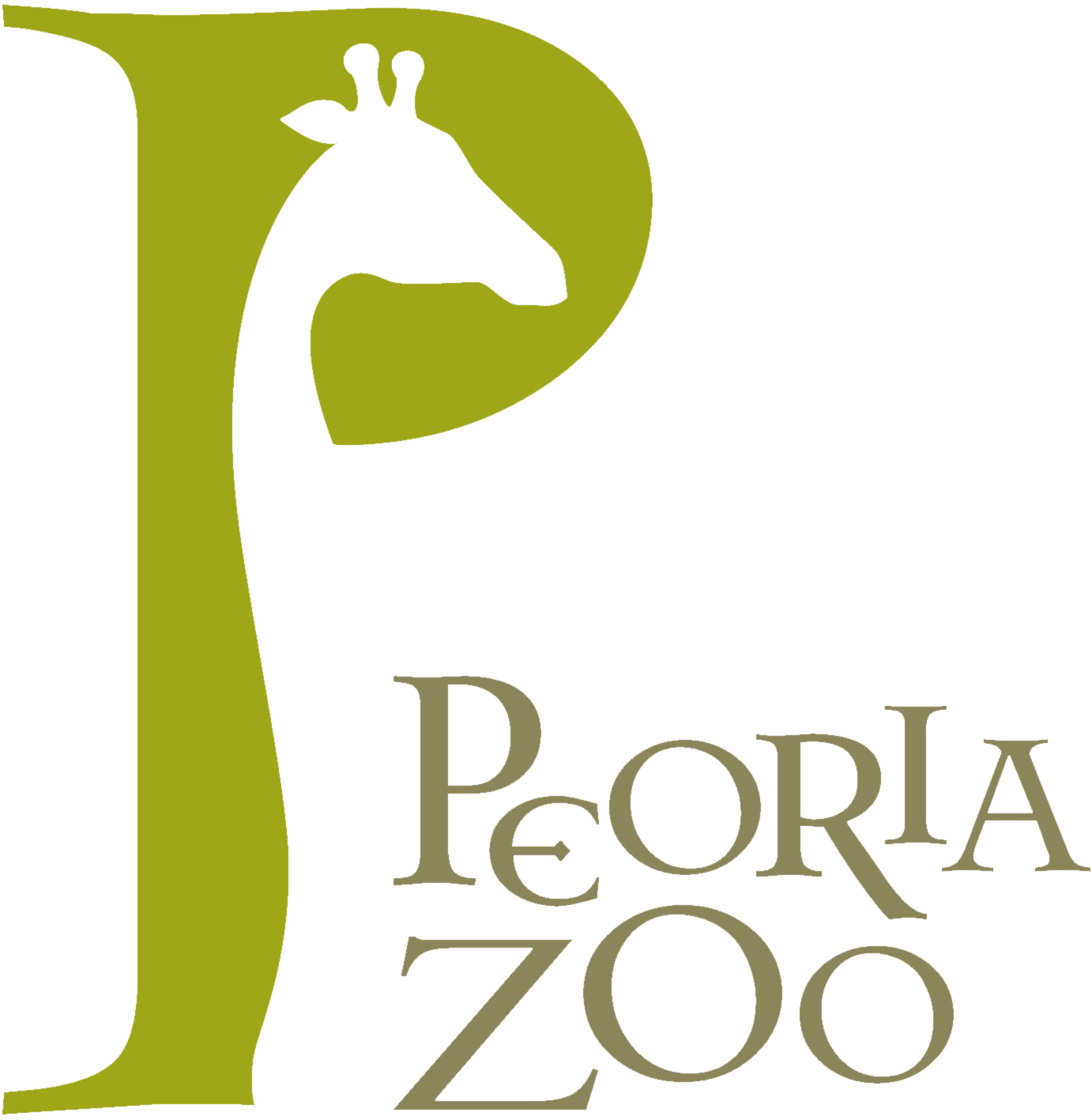Red River Hog - Potamochoerus porcus



Habitat:
Thickets, forests, savannahs, and swamps
Range:
West and Central Sub-Saharan Africa to Northern South Africa and Madagascar.
Activity Cycle:
Diurnal
Features:
They have a long, white crest of hair that runs down its back. This hair will stand up when the animal is excited or scared. The long coat is red with black and white markings on the head. They have white eye rings and long ear tassels. Its long snout is disc shaped to help locate food and it has short sharp tusks that can grow to 3 inches on the lower jaw.
Size:
Can be 3.5-5 feet long and can be up to 2.5 feet tall. The tail can be 12-18 inches long. They can weigh between 120-260 lbs.
Social Structure:
Tend to live in small groups of 11-15 individuals with 3-6 individuals making up a typical family unit. Each family unit is made up of a dominant boar, one female and offspring. Hogs will mate for life. Large temporary groups can be formed of up to 100, but this is usually because of a food source. The males will help care for and defend the young.
Life Expectancy:
15-20 years in captivity
Diet:
Grasses, water plants, roots, bulbs, fruit, carrion
Reproduction:
Females are reproductively mature at age three. Their gestation period is approximately 120-130 days and their litter sizes range from 1-6, with average litters containing four individuals. Young wean at 2-4 months. The breeding season lasts from September to April and is at its peak during the wet season from November to February. Sows construct grass nests (3 meters wide by 1 meter deep). Bush pigs are monogamous and both the mother and dominant boar of the small familial group supply care and protection to the young. Females give birth once annually
Status:
With the reduction in populations of leopards, the bush pig's main predator, populations of the pig have been on the rise. This is detrimental in many ways to human populations because large groups of bush pigs can wreak considerable havoc on crops. They also eat livestock and can be carriers of diseases, such as African swine fever, which affect domestic livestock. African swine fever is carried by ticks, and while it does not harm Potomachoerus porcus, they can transmit the disease to domestic pigs, in which the disease is fatal. They are listed as Least Concern with the IUCN and are part of a Species Survival Plan.
Interesting Facts:
- An interesting note is that the red river hog can be found on both the mainland of Africa as well as Madagascar. Two explanations for the radiation of this species to Madagascar from the mainland have been proposed. The first is that humans introduced the species. The second is that bush pigs first arrived on Madagascar as a result of floating on papyrus beds, which sometimes detach and float out to sea.
- Bush pigs are most active at night and spend the day in burrows among dense vegatation.
- Threat displays involve displays of their facial masks and the production of loud noises. Bush pigs fight by pressing their foreheads together, butting heads, jabbing with their snouts and whipping each other with their tails.
- Bush pigs have been known to follow chimpanzees in search of fallen fruit. They especially enjoy the seeds of the tree Balanites wilsoniana, which they find undigested in the feces of elephants.
- Red river hogs have excellent hearing and can detect the underground movement of an earthworm.
- They have scent glands in their feet and lips, leaving scent marks everywhere they go.
- Blow breath on each other as a form of greeting.
- When piglets are frightened they will crouch and play possum.

AZA cooperatively manages this species as a Species Survival Plan® Program.
Video:
Prices
- Adult (13 and over)$12.50
- Child (2 - 12)$9.00
- Child (1 and Under)FREE
- Senior (65+)$11.50
- Active Military$11.50
We begin transferring animals to evening (off exhibit) holding at 4:30 each night.
Find Us
2320 N. Prospect Rd.
Peoria, IL 61603
Phone: 309-686-3365
Open Daily 10:00-5:00
Last admission at 4:30
